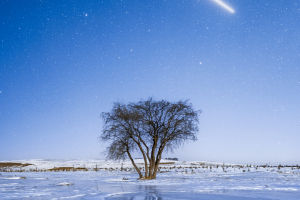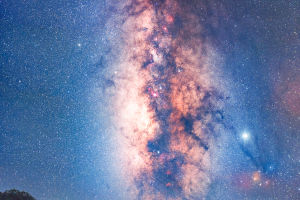Humanity has never ceased its exploration of the universe, from extraterrestrial life to habitable planets.
Recent research reveals that plants can be grown in lunar soil, marking a milestone in lunar and space exploration.
This study is part of NASA's Apollo Next Generation Sample Analysis (ANGSA) program. Researchers from the University of Florida's Institute of Food and Agricultural Sciences (UF/IFAS) utilized soil collected by Apollo missions 11, 12, and 17 half a century ago.
They successfully demonstrated that Arabidopsis, a model plant species, can germinate and grow in lunar soil, also known as lunar regolith. They studied how plants respond biologically to lunar regolith, which is vastly different from Earth soil.
In the early days of space exploration, Apollo astronauts embarked on a visionary plan: to bring samples of lunar surface regolith back to Earth for advanced study and future research. Fifty years later, during the Artemis missions, NASA returned these soil samples, from which plants were successfully grown.
"This research is crucial to NASA's long-term human exploration goals, as we need to harness resources found on the Moon and Mars to develop food sources for astronauts in space habitats," said NASA Administrator Bill Nelson. "This foundational plant growth study is also a key example of NASA's efforts to unlock agricultural innovation, which can help us understand how plants can overcome stress conditions like those found in food-scarce regions on Earth."
Rob Ferl, a co-author and distinguished professor of horticultural sciences at UF/IFAS, emphasized the need to better understand plant cultivation in space for the Artemis program. Another author, Anna-Lisa Paul, a research professor at UF/IFAS, highlighted the historical role of plants in early lunar exploration, ensuring that lunar soil samples brought back did not carry pathogens or unknown components harmful to terrestrial life.
The professors, renowned experts in space plant research, conducted a seemingly simple experiment titled "What Happens When You Grow Plants in Lunar Soil?" Using only 12 grams of soil, they designed a small-scale experiment. They filled Petri dishes with lunar soil, made tiny indentations, added approximately 1 gram of lunar soil, and then nourished it with a nutrient solution before planting Arabidopsis seeds.
As a control, they also planted Arabidopsis in JSC-1A, a simulated lunar regolith material from Earth's land and soils from extreme environments like Mars.
"Two days later, they began to sprout!" said Paul. "This told us that lunar soil does not disrupt the hormonal and signaling processes involved in plant germination."
Over time, differences emerged between plants grown in lunar soil and those in the control group. Some lunar-grown plants were smaller and grew slower, while others were larger. According to Paul, this reflects how plants adapt to the chemical and structural composition of lunar soil.
After 20 days, plants were harvested before flowering, and RNA was extracted for sequencing, revealing Arabidopsis gene expression under lunar soil stress, akin to its response in other harsh environments.
The plants' response to lunar soil may also vary with the soil's collection site. The team conducted additional experiments and found that plants grown in "mature lunar soil," more exposed to cosmic winds, showed the most stress indicators. In contrast, plants in relatively immature soil performed better.
Looking ahead, understanding plant adaptability in lunar soil will continue to be critical for future space exploration. This milestone research not only unveils how plants survive and thrive in the Moon's extreme environment but also provides vital scientific groundwork for establishing sustainable bases on the Moon and other planets.
With advancing technology and deeper research, we aim to further comprehend and utilize resources in space, opening new possibilities for human space exploration.


